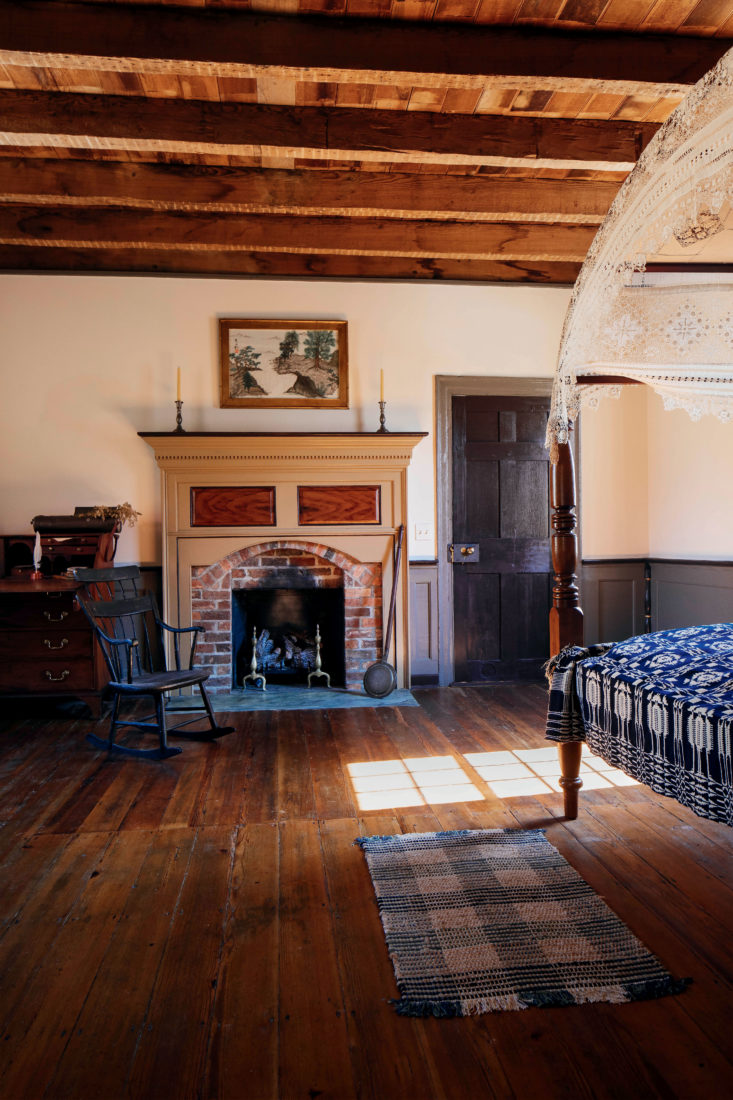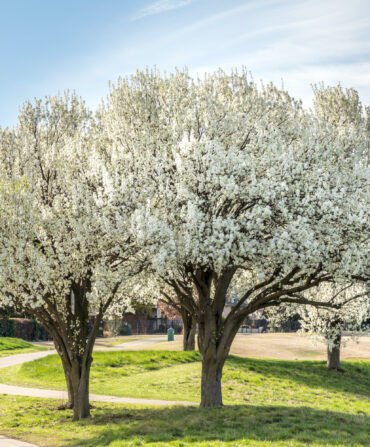Mary Lib Winstead sits in the living room of the Merritt-Winstead House, where she was born in 1918. The windows are cracked against the stifling heat of a Roxboro, North Carolina, summer—the house never had central air installed, but that doesn’t seem to bother Winstead as she describes her lifelong love of restoration. In the carport, her 1980 GMC Caballero even sports a supportive bumper sticker: “Historic Preservation Is the Ultimate Recycling.”
For almost half her life, Winstead has worked to save historic buildings in Person County, just south of the Virginia border—an especially impressive feat considering she is now 101 years old, and just last fall finished her most involved project yet: an early-nineteenth-century farmhouse that looks as though it were plucked from the streets of colonial Williamsburg.

Photo: Geoff Wood
Winstead’s most recent project, an early-1800s farmhouse.
Winstead’s mission to preserve the Roxboro area’s architectural history began with her own family home, a colonial revival that her father, the town doctor, built in 1915. She and her late husband, Wharton, raised their four children there, making careful updates and cultivating lush gardens that landed the estate on the National Register of Historic Places. She began renovating in earnest, though, in the early 1970s, when she fixed up a log cabin for her oldest son to live in. There were many such structures on her family’s tobacco farms—cabins, clapboard homes, barns abandoned when the industry waned.
“It’s about the history of our area,” Winstead says of her ardor for reviving them. “It’s fascinating to hear the stories that come with the homes.” The oldest one, for instance, an early-1800s weatherboard house, belonged to a tobacco factory owner—she also won it a National Register spot. “They built them so well back then,” she says. “They did it right.” Winstead wanted to do it right, too: She did much of the work herself over the years, faux-wood-graining doors, marbleizing mantels, and hunting period furniture.
Her latest project came from a tobacco farm her father purchased when she was in high school. In 2015, she moved the dilapidated farmhouse onto her property, and eventually teamed with Barry Thompson, a Virginia-based antique furniture consultant, conservator, and restoration specialist, to do the heavy lifting.

Photo: Geoff Wood
The home’s bedroom.
As soon as Thompson began to explore the home, he knew it was a gem of American history. “I found some molding hidden underneath boards and traces of original vivid paint colors,” he says. “When decorations of this magnitude end up inside such a simple structure, you have to wonder what’s going on. That’s when I knew it was special.” Through research, Thompson discovered that the original owner was a wealthy farmer named William Warren, who affectionately called his house Warrenby. The curious blue front door, Thompson learned, meant that in the early 1800s, Warren most likely offered up the home as a boardinghouse.
With the help of other specialists, Thompson faithfully restored every inch of the house, down to its authentic door hinges with rosehead nails and leather washers. When finished, last October, Thompson and Winstead dressed in colonial garb and offered tours of the home to community members.
“This most recent restoration is the best one,” says Jean Newell, who sat on the Person County Museum of History’s board of directors for years. “I have a notion it’s one of the earliest homes still standing in the county.” And while interest in preserving historic homes has the phone “ringing off the hook” at Preservation North Carolina’s Piedmont office, says its regional director, Cathleen Turner, Winstead’s restorations beyond residences mean just as much. “It’s wonderful when you find these extant buildings,” Turner says, “and you’re able to piece together the history of that property and of that area and of that particular agricultural practice. They’re treasures.”








